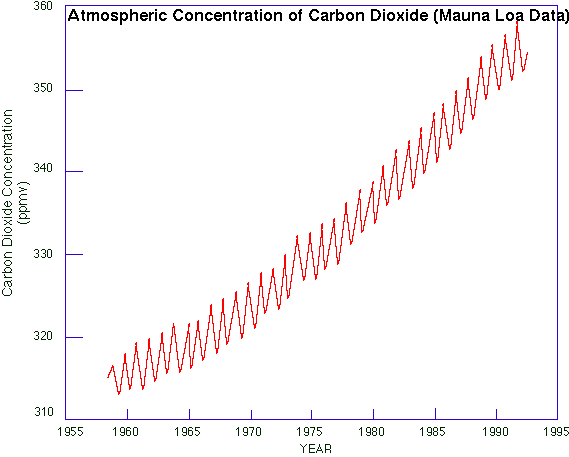The Good New About Global Climate Change
The good news is that if we stop dumping more CO2 into the atmosphere than the earth's natural systems can remove, the earth will heal itself. But the offer is not an unlimited one. It has an expiry date. We don't know when that date is and it depends on what we do in the mean time. The latest report from the US Department of the Environment suggests it is in about 30 years from today. In other words, the people in authority today must act expediciously or the world may well be lost to humanity.
Success is not mandatory. Neither is survival.
The figure below is an enlargement of the chart of annual CO2 content in the atmosphere between 1958 and 1993.

The feature of interest in the chart is the seasonal variation in atmospheric CO2 content. The drop in CO2 each year coincides with spring and summer in the northern hemisphere. Plants and trees growing in the spring and summer extract CO2 from the air faster than we can add it. But in the fall and winter, when the plants stop growing, the atmospheric CO2 content bounces back by more than the earth could remove during the northern growing season. This illustrates that if we stop adding CO2 at such high rates, the earth can quickly reduce the CO2 concentration.
However, this good news is tempered by some not so good news. As Global Warming progresses, more and more of the land in the northern hemisphere will become unproductive due to the spread of deserts and flooding due to rising sea levels. So the capacity of this mechanism is time dependent. The longer we wait to act, the less able the earth will be to reduce atmospheric CO2 levels and the more dramatic and the more costly will be the measures necessary to prevent catastrophy.
Unfortunately, that is about the extent of the good news on Global Climate Change.